Immerse yourself in the captivating world of Japanese alcohol with this comprehensive guide on “Japanese Alcohol and the Types of Drinks Available”. From the traditional Sake and Shochu to the internationally acclaimed Japanese Whisky and Beer, this article takes you on a journey through the rich history, unique production processes, and cultural significance of these beverages. It also introduces you to the delightful category of Japanese Fruit Liquors, showcasing the diverse flavors and fragrances of Japan’s bountiful fruit harvests. Whether you’re a seasoned connoisseur or a curious novice, this article is your gateway to understanding and appreciating the intricate tapestry of Japanese alcohol. Don’t miss out on this fascinating exploration of the integral role that alcohol plays in Japanese culture and social interactions.
Sake (Rice Wine)
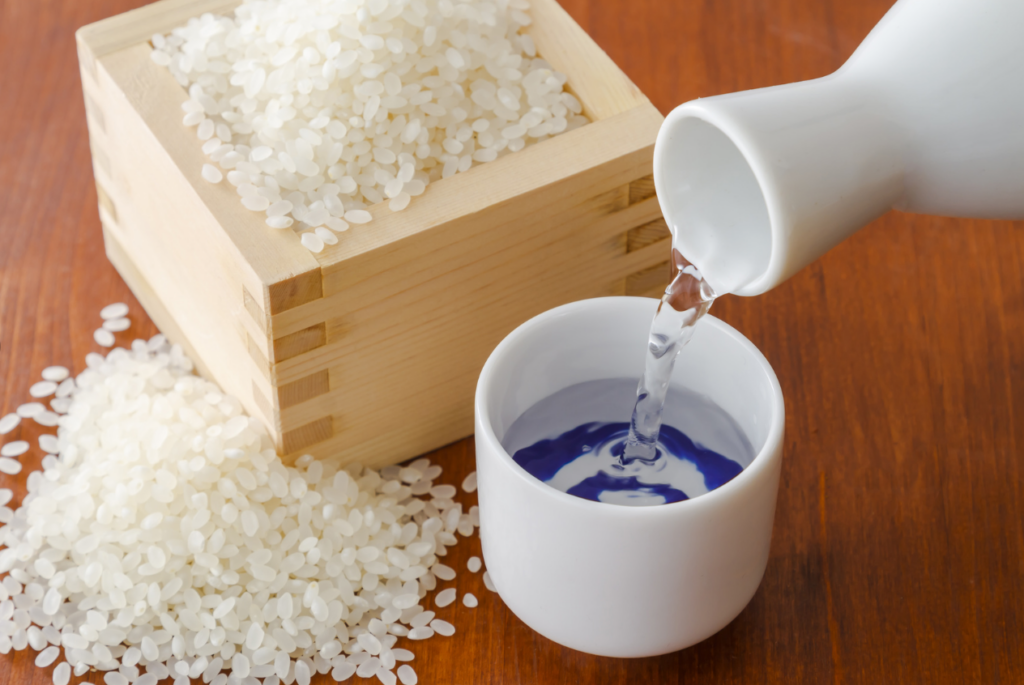
Alcohol has played a significant role in Japanese culture for centuries. The earliest evidence of alcohol consumption in Japan dates back to the Kofun period (250-538 AD). Sake, the traditional Japanese rice wine, has been a cornerstone of Japanese rituals, ceremonies, and social gatherings.
Alcohol serves as a social lubricant in Japan, allowing people to bond and communicate more openly. It is common to see colleagues and friends enjoying drinks together after work or during special occasions. Drinking is often a means to foster relationships and demonstrate respect for one another.
Japan is home to various alcoholic beverages, including sake, shochu, whisky, beer, and fruit liquors. Each drink has its unique history, production process, and cultural significance.
Sake is an alcoholic beverage made from fermented rice, koji (a mold used for fermentation), and water. It originated in Japan over a thousand years ago and has since become an integral part of the country’s culture and cuisine. Sake is typically clear and has a slightly sweet, umami taste, with an alcohol content ranging from 15% to 20%.
Japanese sake, or simply “sake” (pronounced sah-keh), is a traditional alcoholic beverage that has become increasingly popular around the world. Often referred to as “rice wine,” this unique drink has a rich history and a variety of styles and flavors that cater to different palates. In this post, we’ll explore what Japanese sake is, how it’s made, and the different types of sake available.
What is Japanese Sake?
Sake is an alcoholic beverage made from fermented rice, koji (a mold used for fermentation), and water. It originated in Japan over a thousand years ago and has since become an integral part of the country’s culture and cuisine. Sake is typically clear and has a slightly sweet, umami taste, with an alcohol content ranging from 15% to 20%.
Types of Sake:
There are several types of sake, categorized based on factors such as the degree of rice polishing, brewing techniques, and whether alcohol is added. Some common types include:
- Junmai: Made from rice, water, and koji only, with a minimum of 70% seimaibuai. Junmai sake has a rich, full-bodied flavor.
- Honjozo: Similar to junmai, but with a small amount of distilled alcohol added to enhance flavor and aroma. Also has a minimum of 70% seimaibuai.
- Ginjo: Made with rice polished to at least 60% seimaibuai, resulting in a lighter, more fragrant sake. Can be either junmai ginjo (no added alcohol) or honjozo ginjo (with added alcohol).
- Daiginjo: A premium sake with rice polished to at least 50% seimaibuai. It’s typically more refined and aromatic than other types. Can be either junmai daiginjo (no added alcohol) or honjozo daiginjo (with added alcohol).
- Nigori: A cloudy, unfiltered sake with rice particles remaining in the liquid, giving it a creamy texture and sweeter taste.
- Namazake: Unpasteurized sake with a fresh, lively flavor profile. It must be refrigerated to maintain its quality and should be consumed relatively quickly.
- Koshu: Aged sake, which has been matured for an extended period, resulting in unique flavors and colors. The aging process can range from several months to years.
- Taruzake: Sake aged in wooden barrels made from Japanese cedar (sugi), which imparts a distinct woody flavor and aroma.
Shochu (Distilled Spirits)
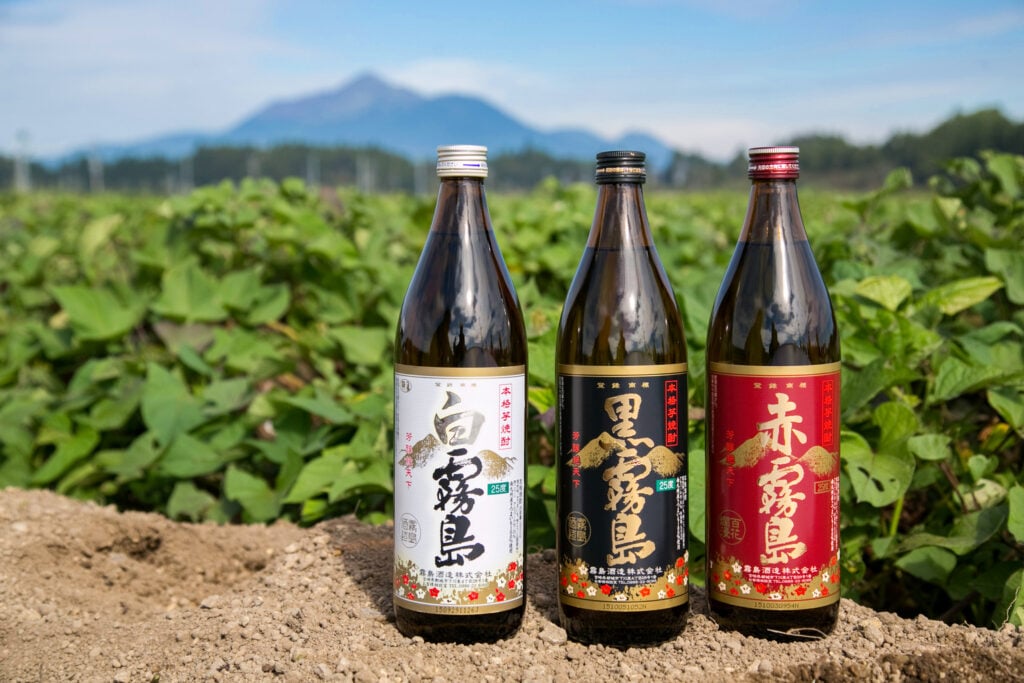
Shochu (pronounced show-chew) is a traditional Japanese distilled spirit that has gained international recognition for its distinct flavors and versatility. Often confused with sake, shochu is a distinct beverage with its own unique production methods and characteristics. In this post, we’ll dive into the world of shochu, exploring its origins, production process, and the various types available.
What is Shochu?
Shochu is a distilled alcoholic beverage that originates from Japan. It is typically made from a variety of ingredients, including barley, sweet potatoes, rice, and sugar cane. Shochu has a lower alcohol content than most other distilled spirits, usually ranging from 20% to 45%. The flavor profile of shochu varies depending on the base ingredients used and the production process, but it is generally characterized by a clean, slightly sweet taste with a hint of umami.
Types of Shochu:
Shochu can be categorized based on the primary ingredient used:
- Mugi Shochu: Made from barley, mugi shochu has a malty flavor profile with subtle sweetness, often reminiscent of whisky.
- Imo Shochu: Made from sweet potatoes, imo shochu has a robust, earthy flavor with a hint of sweetness.
- Kome Shochu: Made from rice, kome shochu has a smooth, clean taste with a subtle sweetness and umami.
- Kokuto Shochu: Made from brown sugar or sugar cane, kokuto shochu has a sweet, molasses-like flavor profile.
- Soba Shochu: Made from buckwheat, soba shochu has a nutty, slightly bitter flavor with a unique aroma.
- Awamori: A regional shochu from Okinawa, awamori is made from long-grain Indica rice and uses a distinct black koji mold (Aspergillus awamori). It has a fruity, floral flavor and a higher alcohol content compared to other types of shochu.
Japanese Whisky
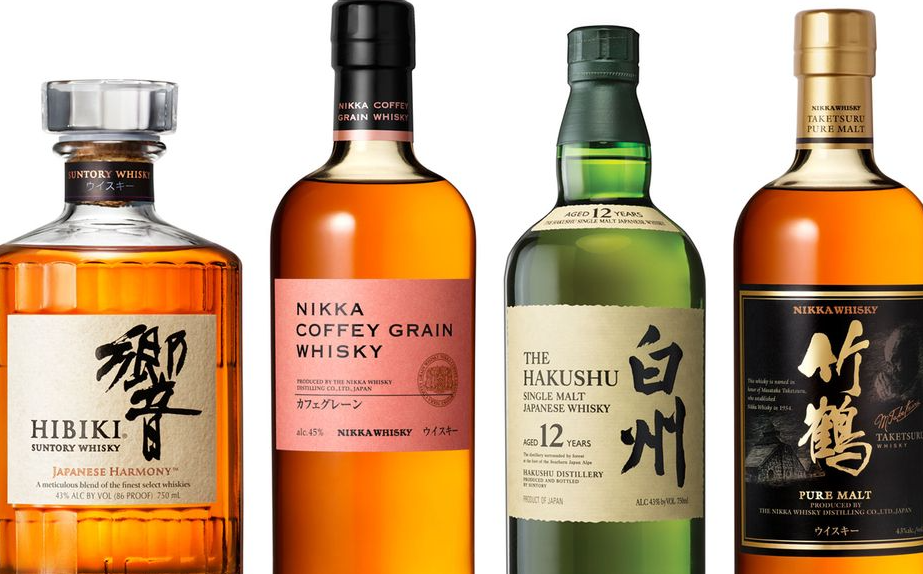
Japanese whisky has taken the world by storm, earning a reputation for exceptional quality and flavor profiles that rival those of traditional whisky-producing regions like Scotland and Ireland. The art of Japanese whisky-making combines time-honored techniques with a unique approach to craftsmanship, resulting in a diverse range of expressions. In this article, we will explore the origins of Japanese whisky, the production process, and the different types available.
What is Japanese Whisky?
Japanese whisky is a type of distilled alcoholic beverage made in Japan, inspired by the Scottish whisky-making tradition. It was first produced in the early 20th century and has since developed a distinct identity characterized by its attention to detail, meticulous production methods, and focus on balance and harmony in flavors. Japanese whiskies are often aged in a variety of casks, including American oak, Spanish oak, and Japanese Mizunara oak, which impart unique characteristics to the final product.
Types of Japanese Whisky:
Japanese whiskies can be broadly categorized into the following types:
- Single Malt: Produced from 100% malted barley at a single distillery, single malt whiskies showcase the unique characteristics and flavors of their respective distilleries.
- Blended Malt: Also known as “pure malt” or “vatted malt,” blended malt whiskies are a combination of single malt whiskies from different distilleries. This type of whisky allows the master blender to create complex and balanced flavor profiles.
- Blended Whisky: A combination of malt whiskies and grain whiskies (made from other grains like corn or wheat) from multiple distilleries, blended whiskies are designed to achieve a consistent flavor and are often more approachable for a wider audience.
- Grain Whisky: Made primarily from grains other than malted barley, such as corn, wheat, or rye, grain whiskies are often used in blended whiskies but can also be found as standalone expressions.
Japanese Beer
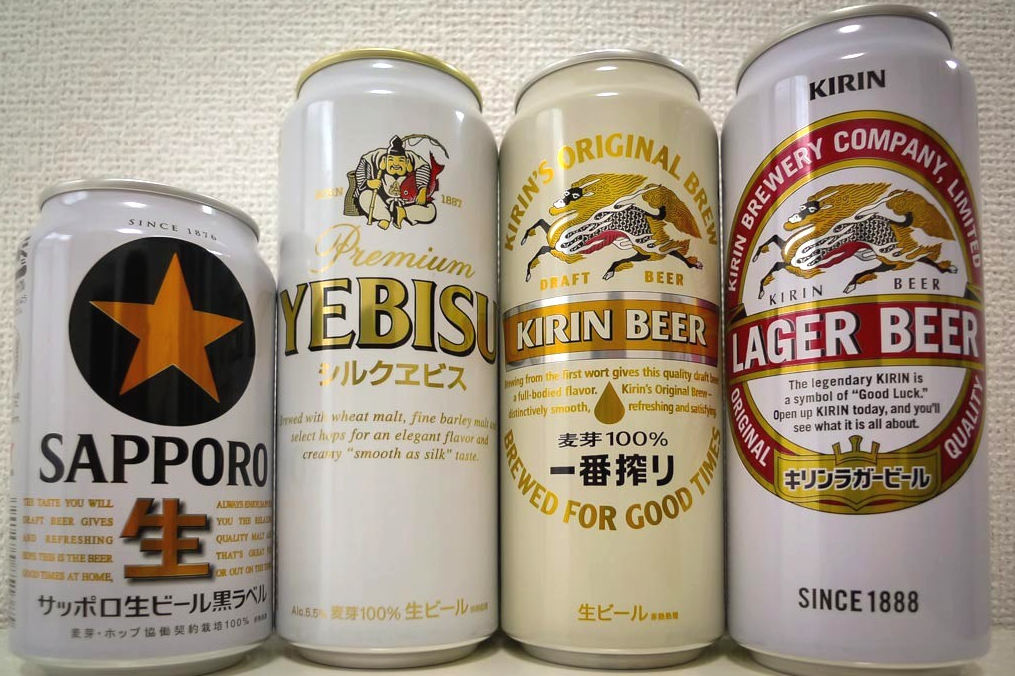
Japanese beer has become increasingly popular worldwide, known for its refreshing taste, high-quality ingredients, and brewing expertise. From crisp lagers to unique craft beer creations, Japan offers a diverse range of options for beer enthusiasts to explore. In this article, we’ll delve into the world of Japanese beer, discussing the different types and notable brands to try.
Types of Japanese Beer:
Japanese beer can be categorized into several types, ranging from mainstream lagers to craft beers with innovative flavors.
- Lager: The most popular type of beer in Japan, lagers are characterized by their clean, crisp taste and light golden color. Japanese lagers are usually brewed using the Reinheitsgebot (German Beer Purity Law) guidelines, which dictate that beer should be made using only water, malt, hops, and yeast.
- Ale: While not as widespread as lagers, ales have gained popularity in Japan, particularly among craft breweries. Ales typically have a more robust flavor profile and come in various styles, such as pale ales, IPAs (India Pale Ales), and stouts.
- Happoshu: Meaning “sparkling alcohol” in Japanese, happoshu is a low-malt beer alternative with a malt content of less than 67%. Due to lower taxes on beverages with lower malt content, happoshu is often more affordable than traditional beer.
- Craft Beer: The craft beer scene in Japan has grown significantly in recent years, with small breweries creating innovative and unique beers that showcase local ingredients and flavors. Craft beer styles can vary widely, from traditional to experimental, offering a diverse range of options for beer enthusiasts.
Japanese Beer Brands:
- Asahi: Asahi Breweries is one of Japan’s largest beer producers, best known for its flagship product, Asahi Super Dry. This lager is characterized by its crisp, dry taste and is a popular choice both in Japan and internationally.
- Sapporo: Founded in 1876, Sapporo is the oldest brewery in Japan. Its most popular beer, Sapporo Premium Lager, has a smooth, well-balanced flavor and a slightly malty finish.
- Kirin: Another major beer producer in Japan, Kirin Brewery is known for its flagship lager, Kirin Ichiban. Brewed using a unique first-press process, Kirin Ichiban has a clean, crisp taste with a subtle sweetness.
- Suntory: Primarily known for its whisky production, Suntory also produces beer under its Premium Malts brand. Suntory The Premium Malt’s is a pilsner-style lager with a delicate balance of malt sweetness and hop bitterness.
- Hitachino Nest: A popular craft beer brand from Kiuchi Brewery, Hitachino Nest offers a range of innovative beer styles, such as the White Ale (a Belgian-style witbier with notes of coriander, orange peel, and nutmeg) and the Espresso Stout (a rich, coffee-infused stout).
- Yoho Brewing: A leading craft brewery in Japan, Yoho Brewing is known for its unique and flavorful creations, such as the Yona Yona Ale (an American-style pale ale with a fruity hop aroma) and the Tokyo Black Porter (a smooth, dark porter with roasted malt flavors).
Japanese Fruit Liquors
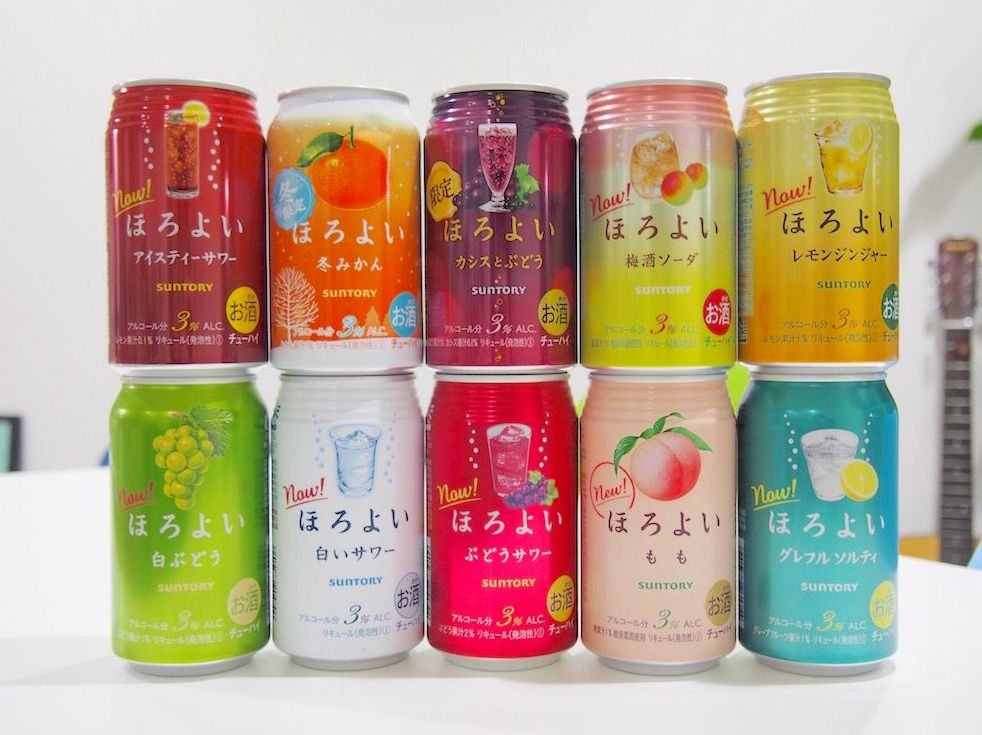
Japanese fruit liqueurs are a delightful category of alcoholic beverages that showcase the diverse flavors and fragrances of Japan’s bountiful fruit harvests. These liqueurs are often infused with seasonal fruits, resulting in a wide range of sweet, refreshing, and aromatic concoctions that can be enjoyed on their own or as part of creative cocktails. In this article, we will introduce the world of Japanese fruit liqueurs, highlighting the different types and notable brands to try.
Types of Japanese Fruit Liqueurs:
Japanese fruit liqueurs can be made using various base spirits and fruit ingredients, resulting in an array of flavors and styles.
- Umeshu (Plum Liqueur): Umeshu is a popular Japanese fruit liqueur made by steeping green plums (ume) in a base spirit, such as shochu or sake, along with sugar. The resulting liqueur has a sweet and sour flavor profile with a fragrant aroma.
- Yuzushu (Yuzu Liqueur): Yuzushu is a citrus-based liqueur made from the aromatic yuzu fruit, a Japanese citrus fruit known for its distinct flavor and aroma. The yuzu fruit is steeped in a base spirit with sugar, resulting in a liqueur with a bright, tangy, and refreshing taste.
- Sakurashu (Cherry Blossom Liqueur): Sakurashu is a delicate and floral liqueur made from cherry blossoms, which are steeped in a base spirit such as shochu or sake. The liqueur has a subtle, sweet flavor with a hint of cherry and a fragrant, floral aroma.
- Momoshu (Peach Liqueur): Momoshu is a fruit liqueur made by infusing ripe peaches in a base spirit, typically shochu or sake, along with sugar. The resulting liqueur has a sweet, fruity flavor with a smooth, velvety texture.
- Other Fruit Liqueurs: In addition to the above, Japanese fruit liqueurs can be made from various other fruits, such as strawberries, apples, grapes, and more, each showcasing their unique flavors and aromas.
Notable Japanese Fruit Liqueur Brands:
- Choya: Choya is a well-known brand in the world of umeshu, offering a wide range of plum liqueurs made from 100% Japanese ume plums. Their products include the Choya Original, Choya Aged 3 Years, and Choya Honey Umeshu.
- Heiwa Shuzo: This Japanese brewery produces a range of fruit liqueurs, including the KID Junmai Ginjo Yuzushu, which is made using yuzu juice, junmai ginjo sake, and natural sugar.
- Suntory: Suntory, known for its whisky and beer production, also offers a range of fruit liqueurs. The Suntory Cointreau Sakura is a cherry blossom liqueur made by blending Cointreau with sakura extract, resulting in a floral and fruity liqueur perfect for cocktails.
- Akashi Sake Brewery: This brewery produces the Akashi-Tai Shiraume Ginjo Umeshu, a premium plum liqueur made using high-quality ginjo sake as the base spirit, which imparts a delicate and refined flavor profile.
- Nagano Trading: Nagano Trading is a producer of momoshu, offering the Momokawa Peach Liqueur, which is made from ripe peaches and a sake base, resulting in a smooth, sweet, and fruity flavor.




